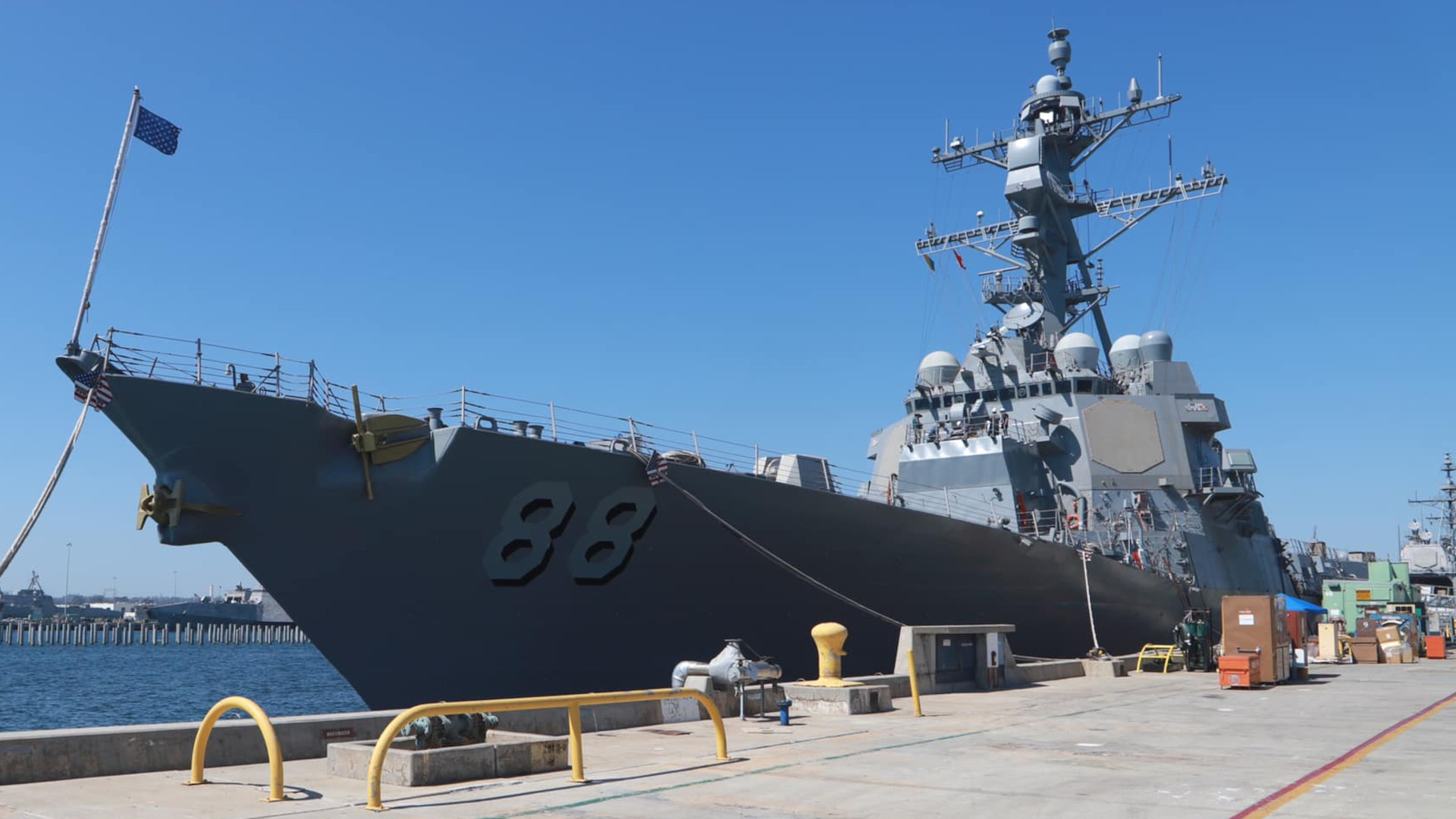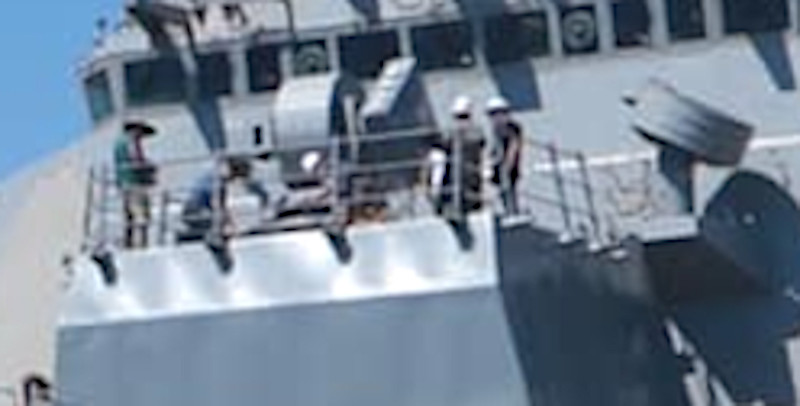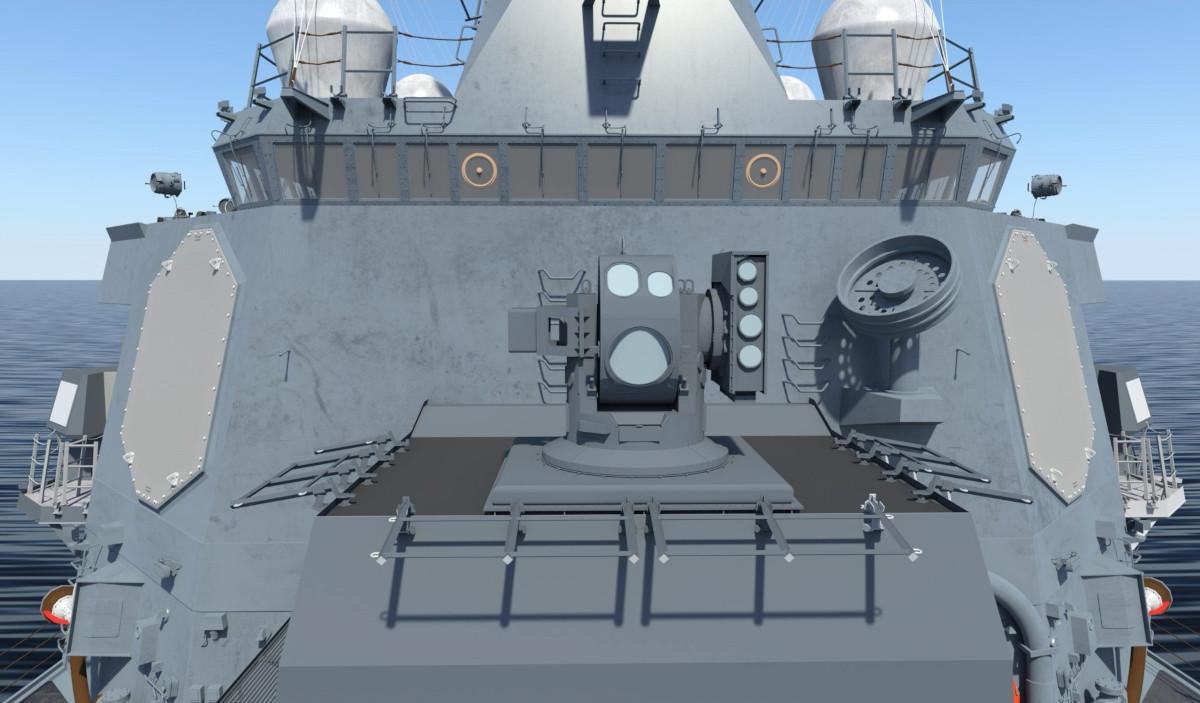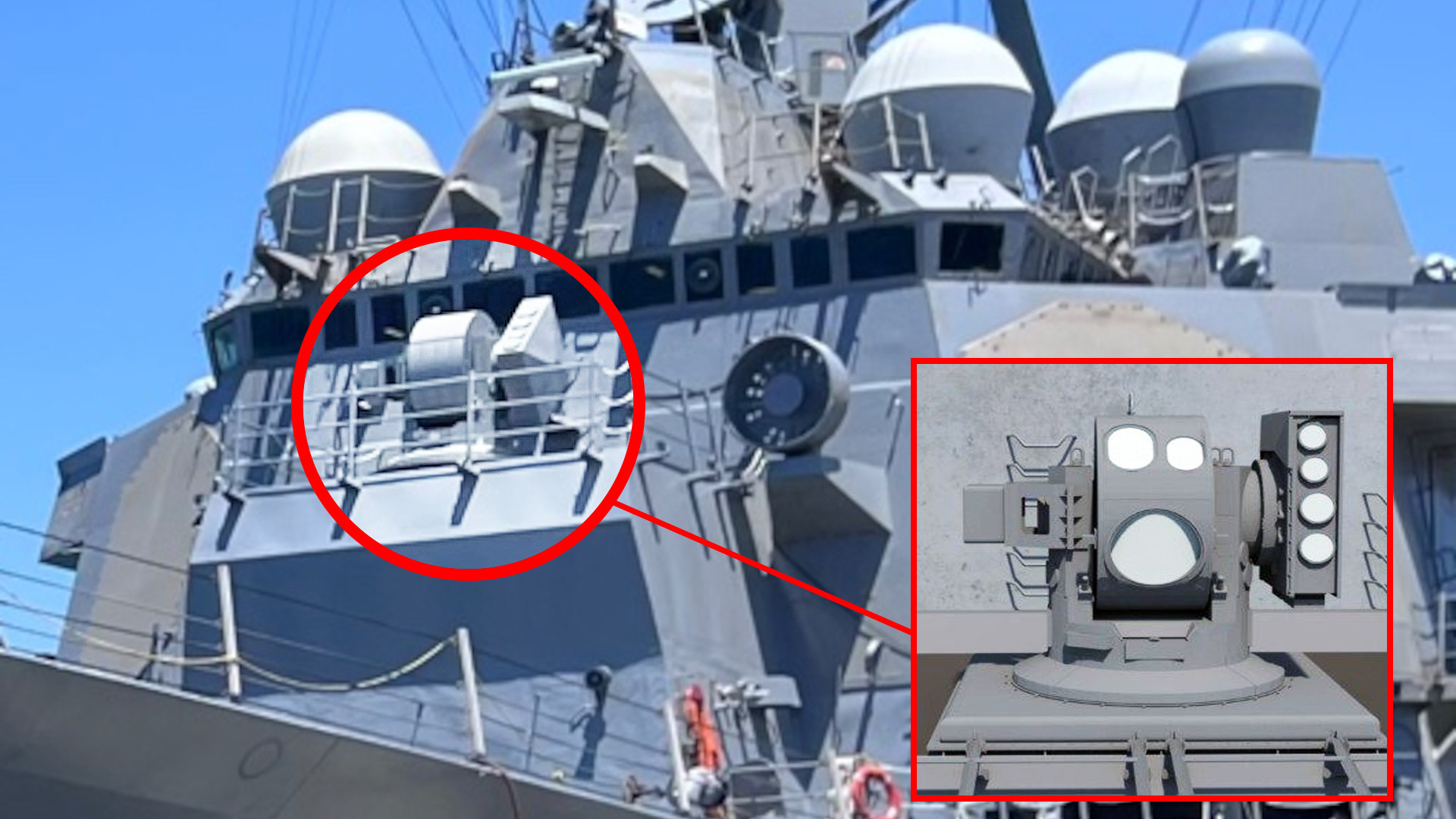The U.S. Navy’s Arleigh Burke class destroyer USS Preble is now armed with a High-Energy Laser with Integrated Optical Dazzler and Surveillance system, or HELIOS. Preble is the first of the service’s ships to be equipped with HELIOS, which is a 60-kilowatt class directed energy laser weapon, and is also the first to have any such weapon integrated with the Aegis combat system. The destroyer joins a small, but growing number of Navy vessels equipped with directed energy weapons of various types.
Lockheed Martin, the prime contractor behind HELIOS, issued a press release last week announcing the installation of the system onboard Preble, but pictures on the ship’s official Facebook page show it had been installed weeks before then. In March, the company said it had completed land-based testing of the system at a range at Wallops Island, Virginia, and that it was being shipped to Preble‘s homeport of San Diego for integration onto the destroyer.


“Lockheed Martin and the U.S. Navy share a common vision and enthusiasm for developing and providing disruptive laser weapon systems,” Rick Cordaro, vice president of Lockheed Martin Advanced Product Solutions, said in a statement in the August 18 press release. “HELIOS enhances the overall combat system effectiveness of the ship to deter future threats and provide additional protection for Sailors, and we understand we must provide scalable solutions customized to the Navy’s priorities.”
Lockheed Martin received its first contract from the Navy for work on HELIOS in 2018, but the system builds on a much longer history of directed energy research and development at the company. You can read more about Lockheed Martin successes in turning the idea of operationally viable laser weapons like HELIOS, developments that had been largely in the realm of science fiction for decades, into a reality in this past War Zone feature.

Preble‘s new laser is installed in front of the ship’s main superstructure on a modified platform that was originally designed to accommodate a 20mm Vulcan cannon-armed Mk 15 Phalanx Close-in Weapon System (CIWS). Flight IIA subvariants of the Arleigh Burke class like Preble never had a CIWS installed in this position, but these ships do still have another one toward the stern.

HELIOS, as its name indicates, is a multi-purpose system. It is powerful enough to damage or destroy certain target sets, such as smaller drones and boats. In this way, it offers something of a limited substitute for the lost CIWS and provides a layer of defense against these targets, which can be particularly threatening to ships like Preble when operating in swarms.
The system can also act as a “dazzler” to blind or confuse optical sensors on enemy ships and aircraft, and optical seekers on incoming missiles and other munitions. When used in this way, HELIOS can potentially throw off incoming weapons or limit an opponent’s general situational awareness and surveillance capabilities.
Lastly, HELIOS has its own optical sensors, which are primarily used to spot, track, and cue the laser, but that can also be used in a secondary surveillance role.

On Arleigh Burke class destroyers like Preble and other ships equipped with versions of the Aegis Combat System, HELIOS promises to be even more capable and flexible.
Rich Calabrese, Director of Surface Navy Mission Systems for Lockheed Martin, had the following to say about HELIOS and Aegis during a broader interview with The War Zone‘s own Tyler Rogoway about the latter system last year:
“We’re continuously upgrading the multi-source integration infusion capability of the Aegis weapon system and looking to bring in new weapons and sensors and do coordinated hard kill and soft kill. Directed energy weapons… We’re really already integrating the HELIOS Laser Weapon System with the Aegis Weapon System CSL [Common Source Library] in our lab here in New Jersey. In fact, we’ve… The guy who’s now managing the laser program… He let me know the other day that we recently fired a laser here under the control of the Aegis Weapon System computer program. So, we’re building in the capability to do that weapon coordination and to do the hard kill, soft kill coordination in an automated fashion, working with the HELIOS Weapon System.”

Lockheed Martin is already on contract to deliver at least one more HELIOS system to the Navy for integration on another Arleigh Burke class destroyer, and there is certainly the potential for additional examples to eventually make their way onto various classes of ships. Lockheed Martin designed the system with future capability growth in mind, as well, and there has already been talk about increasing the maximum power of the laser up to 150 kilowatts.
“HELIOS represents a solid foundation for incremental delivery of robust and powerful laser weapon system capabilities.” Rick Cordaro, the Lockheed Martin Advanced Product Solutions vice president, had added in his statement last week.
The Navy has made clear that HELIOS is just one part of its full directed energy ambitions, which are now set to eventually include high-power microwave-based systems, too. In the past, the service has described this particular system as Increment 1 in a larger Surface Navy Laser Weapon System (SNLWS) program plan.

As part of the Navy’s broader directed energy weapon efforts, a number of other Arleigh Burke class destroyers, including the USS Dewey and USS Stockdale, are now equipped with the less powerful Optical Dazzling Interdictor, Navy (ODIN). Unlike HELIOS, the laser on ODIN is only capable of being used as a dazzler, though the complete system also has secondary surveillance capabilities.

The San Antonio class amphibious transport dock ship USS Portland is now equipped with another laser directed energy weapon, the Laser Weapon System Demonstrator Mk 2 Mod 0. This is a 150-kilowatt class system with somewhat similar capabilities that are more in line with HELIOS, though it is, of course, more powerful.

A 150-kilowatt class system open the door to being able to engage larger and more complex threats, including low-flying cruise missiles and aircraft, as well as artillery rockets. Earlier this year, the Navy, in cooperation with Lockheed Martin, demonstrated the ability of a solid-state laser directed energy weapon to successfully shoot down a target drone acting as a surrogate for a subsonic cruise missile.
A laser weapon called the Laser Layered Defense (LLD) system was employed in that test, which was conducted at the U.S. Army’s White Sands Missile Range in New Mexico.

HELIOS is set to begin at-sea testing on Preble starting sometime in the 2023 Fiscal Year, which begins on October 1, 2022. It’s not clear when the destroyer may be expected to achieve a formal operational capability with the system.
Regardless, with HELIOS now installed on the USS Preble, the number of Navy ships equipped with at least one type of directed energy weapon continues to grow.
Contact the author: joe@thedrive.com
